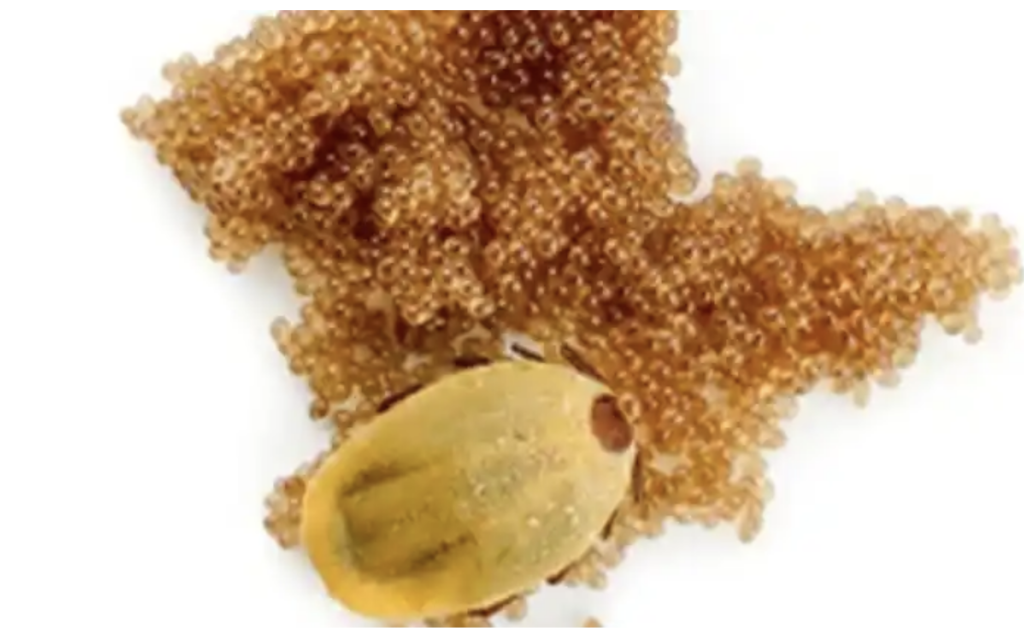
If You See These Eggs In Your Backyard, Burn Them Immediately: A Comprehensive Guide to Identifying and Managing Tick Eggs
Ticks are pesky creatures that can cause serious health issues due to the diseases they carry. Don’t underestimate the presence of tick eggs in your backyard, as they can lead to a troublesome infestation. This friendly and easy-to-understand guide aims to provide you with the essential knowledge and steps to effectively identify, handle, and prevent tick eggs.

Identifying Tick Eggs
Tick eggs are incredibly small, about the size of a poppy seed, measuring approximately 0.5 mm in diameter. They are generally oval or pear-shaped and may appear translucent or slightly whitish, with some variation depending on the tick species. Tick eggs are typically laid in clusters and can be found attached to vegetation, leaf litter, or other surfaces near the ground. As they mature, the eggs may become more opaque and take on a color closer to that of adult ticks. Their texture is usually smooth and glossy, and their color can range from pale yellow to light brown.
The Dangers of Tick Eggs
The main concern with tick eggs is the potential for them to hatch into larvae, which can carry diseases such as Lyme disease and Rocky Mountain Spotted Fever. It’s crucial to handle tick eggs with caution to prevent the spread of these diseases.

Removal and Disposal of Tick Eggs
If you come across tick eggs in your backyard, it’s best to seek guidance from a professional pest control expert or a veterinarian for proper identification and advice on tick control and removal. When dealing with individual ticks that have attached to your skin, use fine-tipped tweezers to firmly grasp the tick near its head or mouth and pull it away without jerking or twisting. After removal, dispose of the tick by either placing it in alcohol, sealing it in a bag, or flushing it down the toilet.
Preventive Measures for Your Backyard
Taking preventive measures can significantly reduce the likelihood of tick eggs and ticks in your backyard. Here are some friendly and easy-to-implement tips:

- Remove Deer-Attracting Plants: Eliminate plants like tulips, hostas, and azaleas that attract deer. This helps deter deer ticks, which are responsible for spreading Lyme disease.
- Introduce Tick-Repelling Plants: Plant herbs like mint and rosemary, and flowers such as chrysanthemums, which can help keep ticks away.
- Regular Lawn Maintenance: Keep your lawn well-maintained by regularly mowing it and reducing heavy brush and ground cover. This helps reduce tick habitats.
- Manage Woodpiles and Debris: Ticks prefer dark and moist places to lay their eggs. Keep woodpiles elevated off the ground and ensure they are away from your house.
- Discourage Small Host Animals: Maintain stonewalls and avoid bird feeders that can attract rodents, which are common hosts for ticks.
- Use Natural Tick Repellents: Consider using essential oils like cedarwood, neem, and citronella, as well as diatomaceous earth, as natural tick repellents.
- Employ Tick Tubes: Tick tubes are effective tools that kill ticks and prevent the spread of diseases. They don’t require spraying.
- Incorporate Rough Textures: Using lava rock or pebble mulch in your garden beds creates an environment that is less hospitable for ticks.
- Create Lawn-Free Zones: Reduce tick habitats by incorporating hardscaping in certain areas of your yard.
- Apply Insecticides Carefully: If necessary, use insecticides such as synthetic pyrethroids or natural alternatives like cedar oil.
By following these friendly and easy-to-understand tips, you can effectively manage tick eggs and reduce the risk of tick infestations in your backyard. Remember, the key is to be proactive and take the necessary precautions.



Leave a Reply